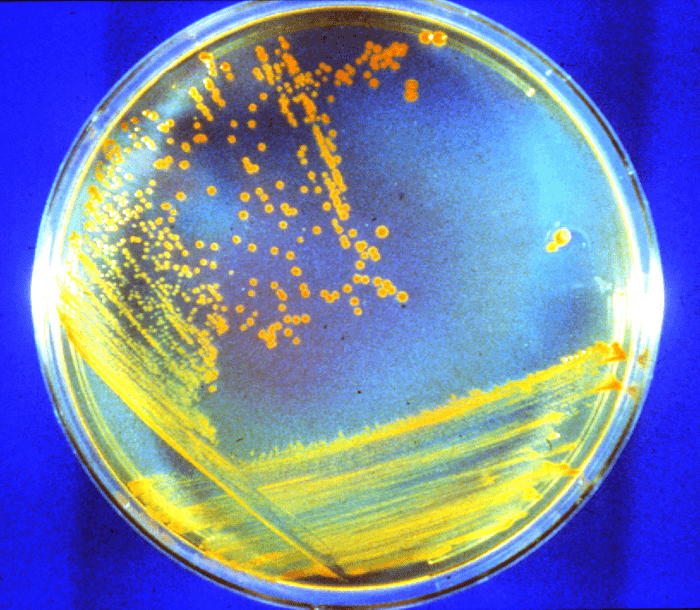How long can hypothetical bacteria survive in today’s harsh Mars conditions?
The bacteria in question may be hypothetical, but the implications aren’t. Mars may be a barren wasteland now, but it could have been a lush environment in its heyday, and there’s a chance that beneath its surface, microorganisms could still be lurking now. Another significant implication would be for space exploration — if future astronauts bring bacteria to Mars, that could basically mean a forever contamination.
But there could be an even more important side to this question: what if, after millions of years of staying dormant, Martian bacteria reached Earth?

Michael Daly, a professor of pathology at Uniformed Services University of the Health Sciences (USU) and one of the study authors, says the research is very relevant in the concept of panspermia — the dispersal of life throughout the universe. The concept of panspermia was first introduced by the Nobel laureate chemist Svante Arrhenius in the early 20th century.
“Our paper offers a novel experimentally supported context on questions that have been asked since the concept of panspermia was first introduced: how long can Life endure in space, and what mechanisms might facilitate Life’s persistence in the frozen and desiccated environments of small bodies, moons and planets of the Solar System, and beyond,” Daly told ZME Science.
There is no flowing, liquid water on the surface of Mars, so any microorganisms on the Red Planet would simply dry out — but just because they dry out doesn’t mean they don’t survive. Instead, some microorganisms can survive almost indefinitely unless they get bombarded with more radiation than they can handle.
A key problem of the ability of microorganisms to survive on Mars (and to survive panspermia in general) is its ability to survive ionizing radiation. Ionizing radiation (X-rays, gamma rays, solar protons) are everywhere, and survivability thus depends on a creature’s ability to withstand this type of exposure.
“The central question we have all been asking,” says Daly, is “Could there be dormant microbial life lurking on Mars, and what are the chances it is alive and could make its way back to Earth in forthcoming Sample Return missions to Mars and its moon Phobos?”
Previous studies found that some terrestrial bacteria (Deinococcus radiodurans) could survive for over 1 million years in Mars’ harsh ionizing radiation. But the study conducted by Daly and colleagues found that bacteria could actually survive for a whopping 280 million years, if not more. In other words, if life ever existed on Mars, we have a good chance of still finding traces of it.

The researchers subjected the organisms to conditions they might encounter on Mars and then simulated exposure to radiation, calculating how much they could survive in different scenarios. They used six model organisms for their study — meaning these are microbes that have been whole-genome sequenced and studied for decades. These organisms include bacteria and fungi.
“We know a lot about them. I have worked with Deinococcus since 1992; yeasts since 1988. Co-author Peter Setlow of UConn has been working with Bacillus spores for 40 years. The extremely radiation-resistant baker’s yeast (S. cerevisiae) we used is from an oak tree in Slovenia and provided by co-authors Cene Gostinćar and Nina Gunde-Cimerman at the University of Ljubljana, Slovenia, who maintains a collection of thousands of extremophilic fungi.”
Some of these microorganisms are also exactly the type of life you’d expect to evolve on Mars, Daly adds. However, the six tested organisms would survive very differently based on different environmental conditions. Some of the bacteria, like D. radiodurans, could survive for up to 280 million years without accumulating an overwhelming dose of radiation. Meanwhile, other organisms could survive around 50 million years.
This is particularly intriguing given that future missions on Mars, specifically the ExoMars (Rosalind Franklin) rover and the Mars Life Explorer, will carry drills to extract materials from up to 2 meters below the surface. Given the results of this study, these missions have a good chance of finding traces of life on Mars, if this life ever existed.
This depth is important: bacteria on the surface simply can’t survive the radiation bombardment. But if they are buried just 10 cm below the surface, they can survive up to 1.5 million years, and at 10 meters below ground, they could survive a whopping 280 million years.
But this also brings another problem to the forefront: contamination.

Forward and back contamination
The researchers were looking at both forward and back contamination — in other words, they looked at the idea of microorganisms reaching the Earth from Mars, but also at the possibility of contaminating Mars
“We concluded that terrestrial contamination on Mars would essentially be permanent — over time frames of thousands of years,” said Northwestern University’s Brian Hoffman, a senior co-author of the study. “This could complicate scientific efforts to look for Martian life. Likewise, if microbes evolved on Mars, they could be capable of surviving until the present day. That means returning Mars samples could contaminate Earth.”
This means that any mission to Mars will have to be extra careful to avoid delivering any microbes to Mars and prevent permanent contamination.
But there’s another part that needs to be addressed: the timing. If Mars was indeed habitable (and inhabited), it would have been much longer than 280 million years ago. Still, there could be a way to explain how microorganisms could survive for billions of years.
“Although D. radiodurans buried in the Martian subsurface could not survive dormant for the estimated 2 to 2.5 billion years since flowing water disappeared on Mars, such Martian environments are regularly altered and melted by meteorite impacts,” Daly said. “We suggest that periodic melting could allow intermittent repopulation and dispersal. Also, if Martian life ever existed, even if viable lifeforms are not now present on Mars, their macromolecules and viruses would survive much, much longer. That strengthens the probability that, if life ever evolved on Mars, this will be revealed in future missions.”
Ultimately, this study hasn’t shown that something has happened — just that it could happen. We still need experimental evidence to confirm these ideas, but when new missions are launched to Mars, they will be armed with this extra knowledge.
Journal Reference: “Effects of desiccation and freezing on microbial ionizing radiation survivability: Considerations for Mars sample-return,” Horne et al.


